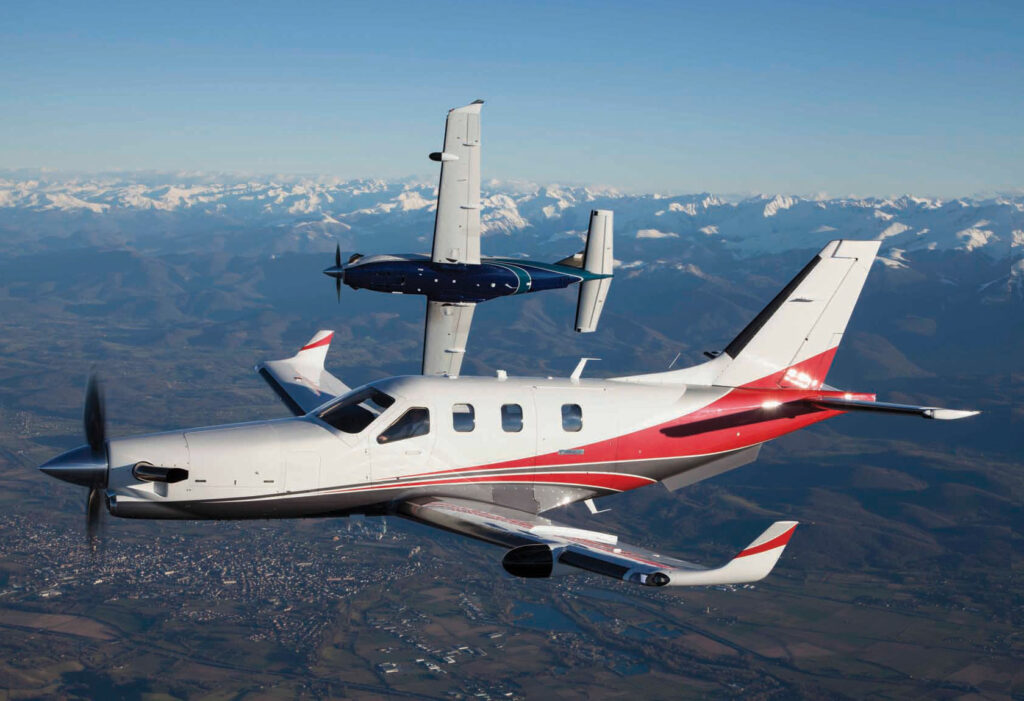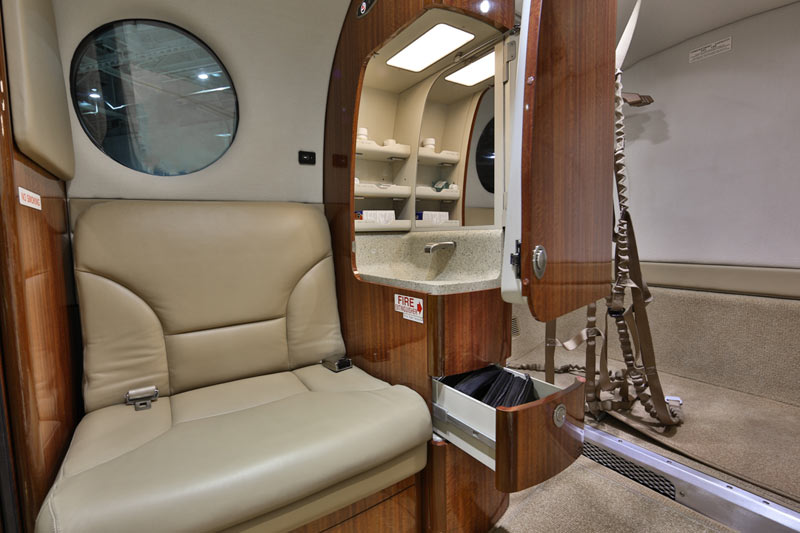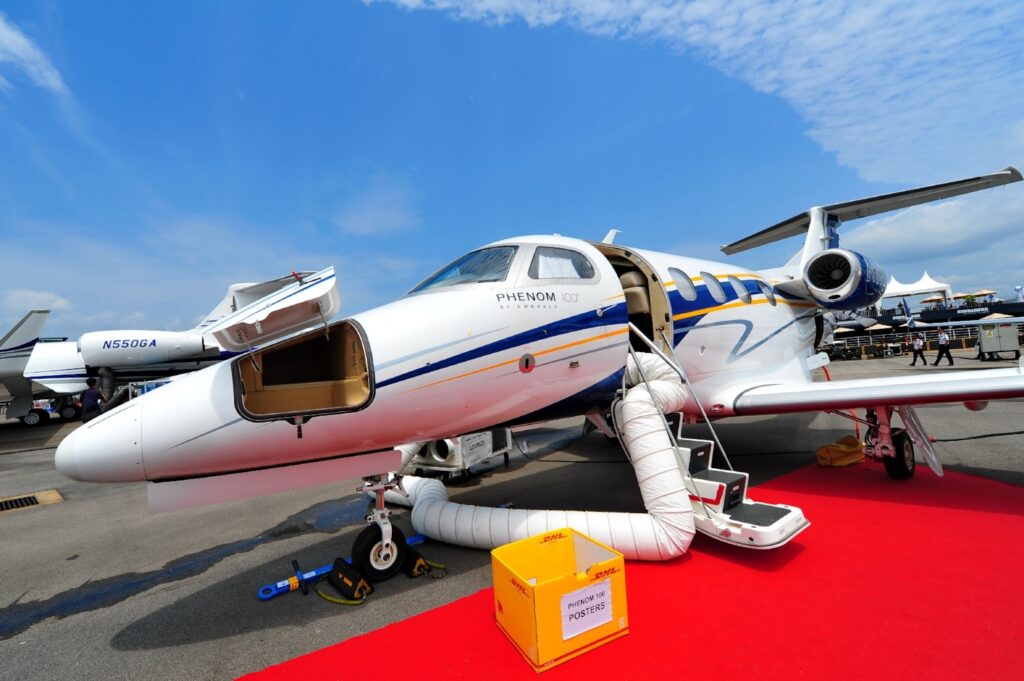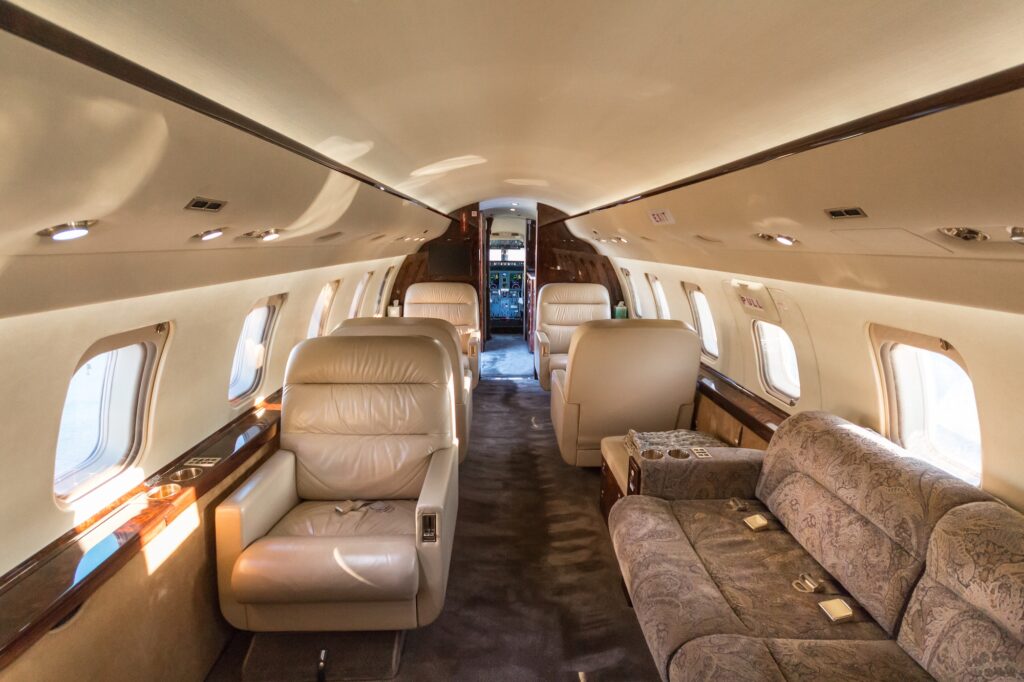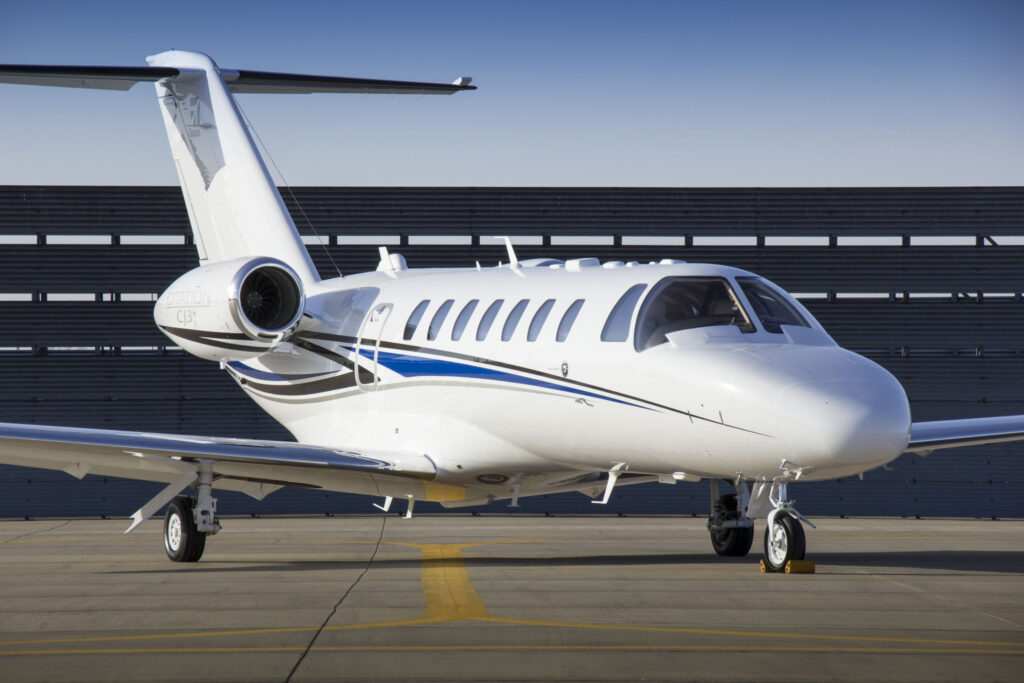Many private aviation users choose a turboprop over a jet based on the fact that they’re typically more affordable from an operational standpoint. While they may not be able to fly as far or as fast as most private jets, the right turboprop can be a great fit for missions with shorter legs. The efficiency of these turboprop engines coupled with the cost savings of single-pilot operations (something each of these aircraft are capable of) means these aircraft can get the job done at a relatively low cost.
In order to remain consistent with previous cost blogs we’ve done for jets, we’re going to use 200,000 miles as our common denominator, which will lead to unusually high hours for some of these turboprops. Keep that in mind when looking at the numbers below.
King Air B200
Beechcraft’s King Air B200 is their cheapest King Air in terms of operational costs. It’s the only twin-engine turboprop on this list, so it burns more fuel than the others at 101.7 gallons per hour, which, at $5 per gallon, is $508.50 per hour. Maintenance, including airframe, engine and APU, is estimated to cost $447.55 per hour. Combining fuel costs and maintenance adds up to $956.05 in hourly direct costs. At 200,000 miles, or 630 hours at 275 knots, direct operating costs total $602,311.50.
A pilot is estimated to make $68,250 annually for flying a B200, a hangar is estimated to cost $31,785.00, insurance is estimated to cost $11,310.00, and pilot training is estimated to cost $7,215.00. Combining each of those fixed costs totals $118,560.00 annually.
Annual Direct: $602,311.50
Annual Fixed: $118,560.00
Annual Total: $720,871.50
Quest Kodiak
Considering the fact that the Quest Kodiak can seat nine passengers with single-pilot operations, this single-engine turboprop is remarkably affordable to fly. Unfortunately, it’s also remarkably slow. It burns only 45 gallons of fuel per hour, which, at $5 per gallon, is $225.00 per hour. Airframe, engine and APU maintenance is estimated to cost $245.00 per hour. With fuel and maintenance, you’re going to spend about $470.00 per hour on direct costs for the Kodiak. At 200,000 miles, or 1,157 hours with a cruise speed of 150 knots, that’s $543,790.00 annually.
A Kodiak pilot is estimated to make $68,250.00 annually, a hangar is estimated to cost $19,987.50, insurance is expected to cost $11,553.75, and pilot training is expected to cost $8,580.00. All of those fixed costs combined total $108,371.25 annually.
Annual Direct: $543,790.00
Annual Fixed: $108,371.25
Annual Total: $652,161.25
Pilatus PC-12NG
The single-engine, single-pilot certified Pilatus PC-12NG (next generation) is one of the most technologically advanced turboprops on this list, and also one of the cheapest to operate. It burns 70.20 gallons of fuel per hour, which, at $5 per gallon, is $351 per hour. Maintenance on a PC-12NG, including airframe, engine and APU, is estimated to cost $309.55 per hour. Combined direct operating costs add up to $660.55 per hour. At 200,000 miles, or 665 hours with a 261-knot cruise speed, that adds up to $439,265.75 annually.
A PC-12NG pilot is estimated to make $68,250.00 annually, a hangar is expected to cost $33,442.50, insurance is expected to cost $21,766.88, and pilot training is expected to cost $10,920.00, which all adds up to $134,379.38 in fixed annual costs.
Annual Direct: $439,265.75
Annual Fixed: $134,379.38
Annual Total: $573,645.13
[ulp id=’xkA7bnsbSMSAnwAm’]
Cessna 208B Grand Caravan
Cessna’s single-engine, single-pilot certified 208B Grand Caravan, their largest single-engine aircraft to date, has been around since 1982. It burns 50 gallons of fuel per hour, which, at $5 per gallon, is $250.00 per hour. Maintenance on a Grand Caravan is estimated to cost $201.64 per hour. Combining fuel and maintenance costs equals $451.64 per hour in direct operating costs. At 200,000 miles, or 989 hours with a cruise speed of 177 knots, that’s $445,671.96 annually.
A Grand Caravan pilot is estimated to make $68,250.00 annually, a hangar is expected cost $28,762.50, insurance is expected to cost $12,285.00, and pilot training is expected to cost $8,580.00, totaling $117,877.50 in fixed annual costs.
Annual Direct: $446,671.96
Annual Fixed: $117,877.50
Annual Total: $564,549.46
Charlie Bravo’s Single-Pilot Planes For Sale
[fusion_portfolio layout=”carousel” picture_size=”default” text_layout=”unboxed” one_column_text_position=”below” equal_heights=”no” portfolio_title_display=”title” portfolio_text_alignment=”center” filters=”no” pull_by=”category” cat_slug=”single-pilot-planes” pagination_type=”none” hide_url_params=”off” offset=”0″ orderby=”date” order=”DESC” content_length=”no_text” excerpt_length=”10″ strip_html=”yes” carousel_layout=”title_below_image” scroll_items=”1″ autoplay=”no” show_nav=”yes” mouse_scroll=”no” hide_on_mobile=”small-visibility,medium-visibility,large-visibility”/]
Socata TBM 900
Socata’s single-engine, single-pilot certified TBM 900 is the newest aircraft on this list, introduced in 2014 as an upgrade to the TBM 850. It burns 70 gallons of fuel per hour, which, at $5 per gallon, is $350.00 per hour. Maintenance on the TBM 900 is estimated to cost $328.00 per hour. Combining the two equals $678.00 per hour in direct operating costs. At 200,000 miles, or 551 hours at 308 knots, it costs $373,578.00 annually.
A TBM 900 pilot is estimated to make $68,250.00 annually, a hangar is expected to cost $16,575.00, insurance is expected to cost $28,500.00, and pilot training is expected to cost $8,700.00, totaling $122,025.00 in annual fixed costs.
Annual Direct: $373,578.00
Annual Fixed: $122,025.00
Annual Total: $495,603.00
[ulp id=’xkA7bnsbSMSAnwAm’]

